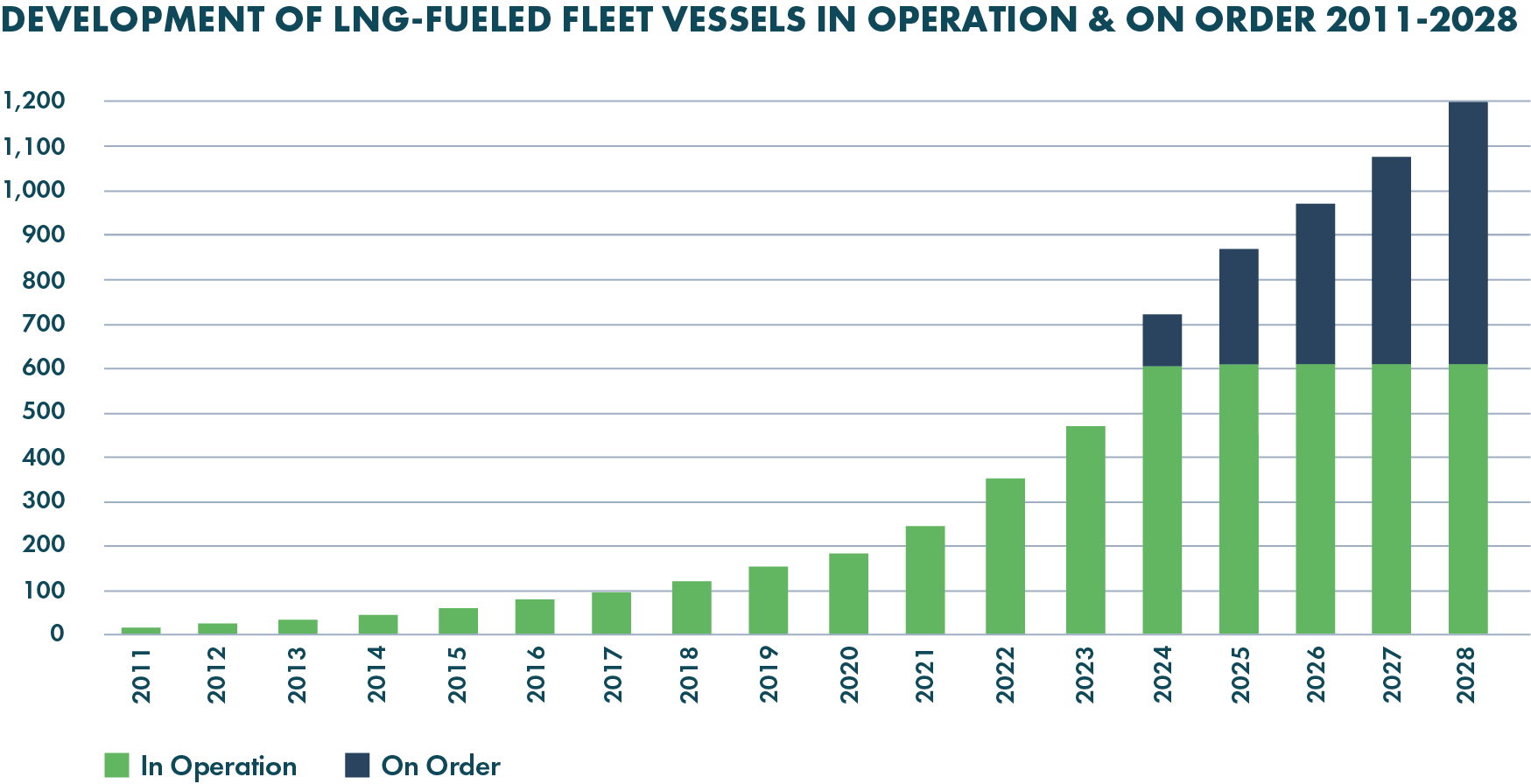The Rise of LNG as a Marine Fuel: A Pathway to Decarbonization
Over the past few months, there has been a significant resurgence of investment in vessels fueled by LNG. The IMO’s targets for 2030 and 2050 have placed increased urgency on the shipping industry to find accessible, viable, and commercial alternatives to the VLSFO of today.
With its ability to reduce greenhouse gas emissions both now and in the future, liquefied natural gas, along with its bio and synthetic derivatives, has rapidly solidified its role in shipping’s decarbonization efforts. Its compatibility with existing transportation and storage infrastructure makes it globally available, unlike some other alternative marine fuels.
Global Orderbook: The Current State of Play
Currently, there are 609 LNG-fueled vessels in operation worldwide, with an additional 632 on order, excluding LNG carriers. Including carriers, the number of vessels in operation rises to 1,314, with 983 on order. This growth is substantial considering that in 2010, there were only 21 LNG-fueled vessels in operation.

LNG-fueled vessels currently represent around 4% of the global fleet, which totals approximately 60,000 vessels. This indicates a strong buy-in for LNG as a marine fuel.
The container segment, known for its high fuel consumption, is leading the adoption of LNG as a marine fuel. Major players such as MSC, CMA CGM, AP Moller Maersk, and Hapag-Lloyd have made significant investments in LNG dual fuel vessels.
LNG’s Immediate & Future Potential
Long-term investments are crucial for ship owners and operators to achieve net-zero emissions. LNG offers immediate emission reductions of up to 23% in high-pressure engines. Methane slip, a common concern, is minimal in these vessels when operated at recommended power-loads.
Furthermore, the adoption of liquefied biomethane and e-methane can lead to even greater emissions reductions, potentially reaching carbon-neutral operations and a net zero future by 2050.
The Role of Supply & Demand
The availability of LNG bunkering infrastructure in ports worldwide has accelerated the adoption of LNG as a marine fuel. Currently, LNG bunkers are available in approximately 185 ports globally, with plans to increase this number to 235 by 2025.
Concerns over the availability and rising costs of other alternative fuels like methanol have also contributed to the growing demand for LNG.
The Future of LNG
The LNG pathway offers a practical solution for the shipping industry to meet 2030 regulations and achieve a net zero future by 2050. With its compatibility with existing infrastructure, growing availability, and commercial viability, LNG is poised to become a leading future fuel for shipping.
Investments in LNG, as seen in the global orderbook and industry headlines, are likely to continue in 2025, reflecting the industry’s commitment to decarbonization.
Steve Esau, COO of SEA-LNG, emphasizes the environmental and commercial benefits of LNG as a marine fuel and its role in maritime decarbonization.
The opinions expressed herein are the author’s and not necessarily those of The Maritime Executive.

